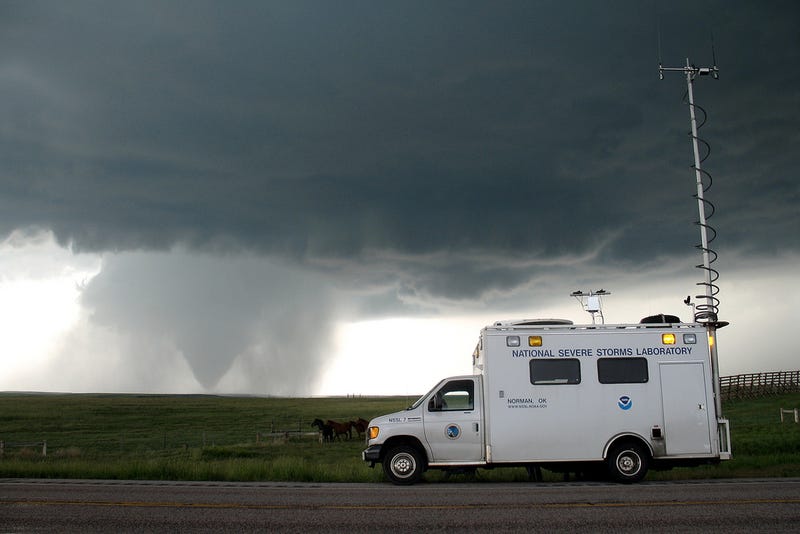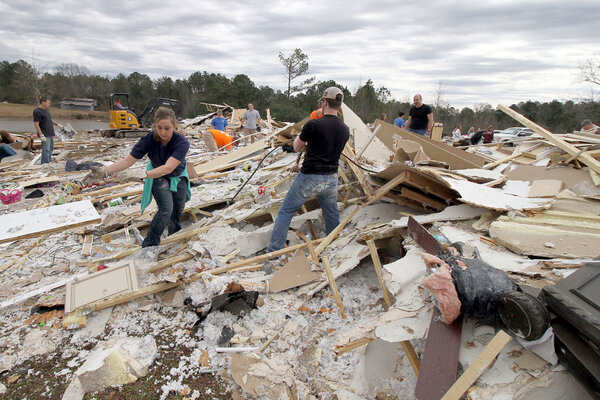Tornado Categories, Watches and Warnings

Measuring Their Power

The National Weather Service classifies tornadoes by using a scale that ranges from EF0 – EF5. However, this scale does not measure wind speed or size. Rather, a tornado is “rated” based on the damage it causes after the fact. Furthermore, a tornado strike is not usually officially recognized unless it touches the ground, an eye witness sees it or there is a path of damage to measure.
EF0 tornadoes produce little or no damage and wind speeds generally do not exceed 80 miles per hour.
EF1 tornadoes produce minor damage and have wind speeds of 80-120 miles per hour.
EF2 tornadoes are strong enough to rip roofs off of buildings and wind speeds range from approximately 120-160 miles per hour (about the same as a category 4-5 hurricane).
EF3 tornadoes produce winds between roughly 160-210 miles per hour and can blow out buildings and cause walls to collapse.
EF4 tornadoes have wind speeds of around 210-260 miles per hour and literally flatten almost everything in their path.
EF5 tornadoes, the most powerful of all, have wind speeds in excess of 260 miles per hour and blow away almost everything in their path.
This is just an overview of the very complex and detailed classification system that the government has created. However, these are only estimates based on the analysis of damage, not actual wind speeds or size. In all reality, any tornado has the potential to lift and propel debris into the air at high speeds, pick up vehicles, knock down trees and power lines and kill people who are in the wrong place at the wrong time.
Watches and Warnings

While technology has improved over the past few decades, predicting tornadoes and issuing accurate warnings is still easier said than done. The National Weather Service will issue a tornado watch if conditions are favorable for tornadoes to form over a wide area during a specific time-frame. These are generally associated with large thunderstorms that form during the spring and fall months as cool and dry air collides with hot and moist air at high speeds. However, a tornado can form anytime and from any type of storm if the conditions are right.
A tornado warning is issued once an eye-witness notices a funnel cloud or radar alerts meteorologists that one may be present in a particular storm. However, these systems are far from perfect, and it is only possible to speculate as to where and when a tornado will strike. This is why many people who are in the path of a tornado warning will not experience anything despite the fact that one is in the general vicinity. However, those who are in the path of a tornado, which can sometimes be up to a mile wide, can experience ferocious devastation that can literally wipe an entire city off the map.
Unfortunately, many people do not heed warnings or pay attention to sirens when they go off because they’ve experienced too many false alarms in the past. While they can be a nuisance and disrupt the flow of our daily lives, it’s important to seek shelter whenever the threat of a tornado is imminent.
Make sure that you seek shelter immediately if a tornado warning is issued, no matter where you are or what you are doing. Even if there is no warning, a small tornado can form in a moment’s notice on the tail end of a thunderstorm, which is another reason why it is so dangerous to be outside or driving during severe weather.
Remember that you can be injured or killed by the smallest tornado if you happen to be in the wrong place at the wrong time. Taking shelter saves lives 90% of the time, even when people experience a direct hit. Most victims are either struck by debris or are in structures that do not provide adequate protection. Make sure that you know where to go when a tornado is imminent, and take cover until the storm has passed and the dust settles.
